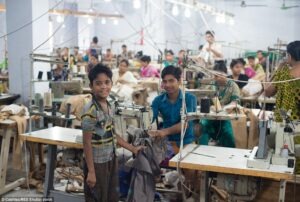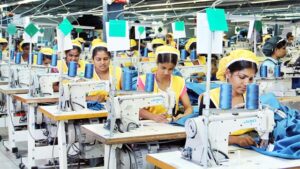Leaders from various countries flew to Davos, Switzerland to discuss the disastrous future the world is moving towards. They discussed for more than four days about various topics. But climate change, environmental protection, human rights, and child labor were the topics the leaders focused on. The apparel industry and its supply chain are tightly interwoven with all these problem areas and it is shaping the future of the Apparel Supply Chain.
Apparel Supply Chain today
The global apparel supply chain is a collection of millions of small, medium, and large businesses. Manufacturers, suppliers, buyers, and customers are now spread across the world. But all these businesses have one thing in common, they are all trying to cut down costs, innovate products and deliver goods on tight deadlines.

Apart from a few large businesses, the working conditions of the employees and the location in which they are working is not very favorable for its workers. Fire safety, building safety, labor conditions, and pollution controls are weak in the majority of manufacturing units across the world. There have been numerous incidents around the world that opened the eyes of the world to the tragic conditions of apparel workers. There is a global initiative by several organizations to look into such matters and improve the entire supply chain. There is an international effort to promote an environmentally friendly and sustainable apparel industry.
The momentum is propelled by various factors. Customers are demanding that they need transparency into the supply chain of products. People are even willing to pay a better price for products that are sustainable and human-friendly. According to the International Labor Organization, more than 260 million children are in employment around the world. For the majority of the work, the children are either too young or the condition of the workplace is not acceptable.
The ILO also estimates that more than 170 million children are engaged in child labor making textiles and garments to satisfy the demand of consumers in Europe, the US, and beyond. But in recent years the situation is improving as more and more people are trying to consume sustainable products.
How did we end up here?
Brands are always on the lookout for cheap labor. Countries that are growing fibers like cotton, also have cheap labor available. They use children and women at various stages of apparel production starting from cotton picking to packaging and moving.

Most of the time, people from impoverished backgrounds are lured into such organizations promising decent pay and living conditions. Often these promises are not kept. Children start as early as fifteen years old at these factories. Because the apparel supply chain is immensely complex, it is really difficult for brands to find out these actions taking place in their supply chains.
Why is it happening?
Multinational brands always have various guidelines when it comes to suppliers. They only select suppliers that are compliant with their ethical and sustainable codes. But you may be wondering then how is it still prevalent?
The suppliers often subcontract their work to local micro and small businesses in order to cut costs. In reality, the brand cannot actually make sure of the origin of its products. Besides, the supply chain is complex and distributed among various countries. We have talked about the blockchain and how it can be leveraged to improve transparency in the apparel supply chain.
No Time to Read? Download the article
Apparel Supply Chain of the Future
Let’s come back to the Davos meeting. Leaders from various countries have pledged for a better world. A world in which carbon is not emitted beyond a limit. Children are given the privileges to learn and thrive. Women are respected for their contribution and nature is well preserved for the infinite number of generations to come.

As a brand/consumer, one obvious step to ensure to procure such ethical and sustainable products is to look for global accreditations Fair Trade certificate, Global Organic Textile Standard (GOTS) and the ethical trading initiative, etc for more transparency in the textile and garment supply chain.
Buy Fair Trade and GOTS certified fabrics from Dinesh Exports
From 2022 onwards, there will be an implementation of new laws in target markets like the Netherlands to ban entry of any product that used child labor at any point in the supply chain. Subsequently, similar measures will also be taken in France, England, and Australia.
Countries like Sweden and Germany are becoming more stringent towards apparel that has more chemicals in it. Except for recycled chemicals. More taxes will be levied on those items. The new USA president Joe Biden’s aim to decarbonize the country and become a zero-emission economy by 2050 is also a driver towards an alternative supply chain.











